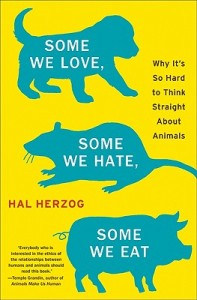I haven’t always loved sitting out in the sun, and I’ve been a very reluctant convert to the beach. But I’ve slowly come around to loving the time I get to spend relaxing in the sunshine with a good book. Particularly this summer after the long winter where I would go days without even venturing outside I’m loving the warm weather. But I’m also the kind of person that turns lobster red after more than a few minutes of soaking in the sun’s rays.
Being so fair comes at a cost, and I’m in the dermatologist’s office almost every six months. I would say I’m pretty vigilant about getting my moles checked and watching out for any signs of skin cancer. I’ve had maybe a dozen moles removed, many of which had to be re-done after coming back with questionable test results. Being so aware of the risks that I’m taking when I step out in the sun has made me the self-proclaimed queen of sunscreen. My friends love their SPF 4, and mock me and my SPF 55 quite a lot – but aside from choosing the high numbers, I’ve realized that I don’t actually know all that much about sunscreen.
| Ocean City, MD on my summer vacation! |
New regulations released by the Food and Drug Administration (FDA) last month, explain a lot about what sunscreen can, and even more important what it can not do. Sunscreen regulations in the US hadn’t been updated in more than 30 years, so we were long overdue for an overhaul. Starting next year, sunscreens will be broken into two categories, those that protect against skin cancer and those that don’t. My friends with their SPF 4… they aren’t getting any protection against skin cancer with an SPF that low. The new regulations will also require companies to cut out advertising and claims that promote longer durability (waterproof of sweatproof) or that make inflated claims about their ability to protect users from sun damage.
According to this article in Scientific American, the new regulations (if they are followed accurately) have the potential to reduce skin cancer rates in the US. Ultraviolet (UV) radiation is responsible for 90% of non-melanoma skin cancers, which affect one out of every five Americans. UV radiation is also responsible for 65% of melanoma, which kills approximately 8,700 people a year. Skin cancer is such a prevalent problem, but will the new regulations actually make a difference?
I think as long as people know what to look for, they’ll be able to choose the right sunscreen. The FDA’s new regulations really focus on how sunscreen products are labelled, and I think that they will make it easier for people to make the right choices. The thing to look for on sunscreen bottles is “broad spectrum”. Under the new rules the only products that can claim to be broad spectrum will protect against both UVA and UVB rays. Sunscreen that can not be called broad spectrum, or that has an SPF lower than 15 will have to carry a warning label that says explicitly that it does not protect against skin cancer or premature skin aging from skin cancer.
Both UVA and UVB rays can cause long term skin damage, but UVB rays are the main culprit when it comes to that lobster red sunburn. SPF is a reflection of a sunscreens’ ability to protect against UVB rays which is really just a reflection of sunburn protection. Currently, lotions that only protect against UVB rays can have a very high SPF, but that doesn’t mean they are any better at protecting you from skin cancer because the UVA rays are still not being blocked. Under the new regulations it will be much clearer what really protects you against both UVA and UVB rays.
| More of the beach in Ocean City, MD |
Under the new regulations, sunscreen manufacturers will be required to be more specific with their claims. For instance the term sunblock, won’t be allowed because there is NO sunscreen that can block the sun’s rays completely. There is also NO sunscreen that stays completely on the body when exposed to water, so none of them are waterproof or sweatproof.
The other big news in the FDA’s sunscreen regulations? My SPF 55 is no better than SPF 50. In fact, any number higher than 50 is just making a trumped up claim. So that SPF 100 is not actually doing more for you than lower numbered sunscreens. This is because there is no evidence that suggests that SPF’s higher than 50 actually protect people more. But that doesn’t mean that all SPF’s are the same. Different SPF’s protect you in the sun for different amounts of time. So say I start to burn after 10 minutes with no sunscreen, and I put on SPF 15, the time it takes me to burn will be extended by a 15, so I’ll have 150 minutes before I turn into a tomato.
After getting several bad sunburns while wearing sunscreen, I became aware of the need to re-apply. Even if you don’t go in water, the chemical components in sunscreen break down over time and lose their efficiency. Putting on sunscreen at the beginning of the day just doesn’t cut it. So, under the new regulations, the FDA recommends re-applying sunscreen every two hours, and after going in the water or toweling off.
Basically the new regulations make it easier to enjoy a day in the sun without the painful sunburn and dangerous skin damage that can go hand in hand with summer vacations by making it easier to choose an effective sunscreen. The things to look for? Broad spectrum, between SPF 15 and 50, and that all sunscreens have to be re-applied every two hours. If you keep these things in mind you can greatly reduce your risk of dangerous skin cancers.
Sunscreen regulations were greatly in need of a revision, and I for one (speaking for the fair people of the word) am very glad to finally know exactly what I need to do to protect myself in the sun.


